- Alternative methods for sealing a wood stove door without removing it.
- Pros and cons of removing the door from the stove to apply the sealant
Hello wood stove enthusiasts! If you’re tired of dealing with annoying drafts coming through your stove door, you’re in the right spot.
In this article, I’ll guide you through the process of sealing your wood stove door completely. With some simple materials and a bit of elbow grease, you’ll have a tight and efficient seal in no time.
So let’s roll up our sleeves and get ready to keep the warmth where it belongs – inside our homes!
Key Takeaways
- Inspect the wood stove door for gaps or leaks
- Use a high-temperature sealant designed for wood stove doors
- Clean and prepare the door surface before applying the sealant
- Regularly check and maintain the seal to ensure its effectiveness
Assessing the Seal: Identifying the Problem Areas
I can determine the problem areas by inspecting the wood stove door for any gaps or leaks. Detecting leaks is crucial in troubleshooting techniques for sealing a wood stove door.

To start, I carefully examine the entire perimeter of the door, paying close attention to the edges, corners, and hinges. I run my hand along the door, feeling for any drafts or air movement. Additionally, I use a flashlight to spot any light coming through gaps or cracks. Sometimes, I even light a candle and hold it near the door to see if the flame flickers, indicating a leak.
By thoroughly assessing the seal, I can identify the problem areas and take the necessary steps to seal them completely.
Now that we know where the leaks are, let’s move on to gathering the necessary materials: what you’ll need.
Gathering the Necessary Materials: What You’ll Need
To make sure everything is ready for the task, I’ll gather all the necessary materials. Here’s what you’ll need:
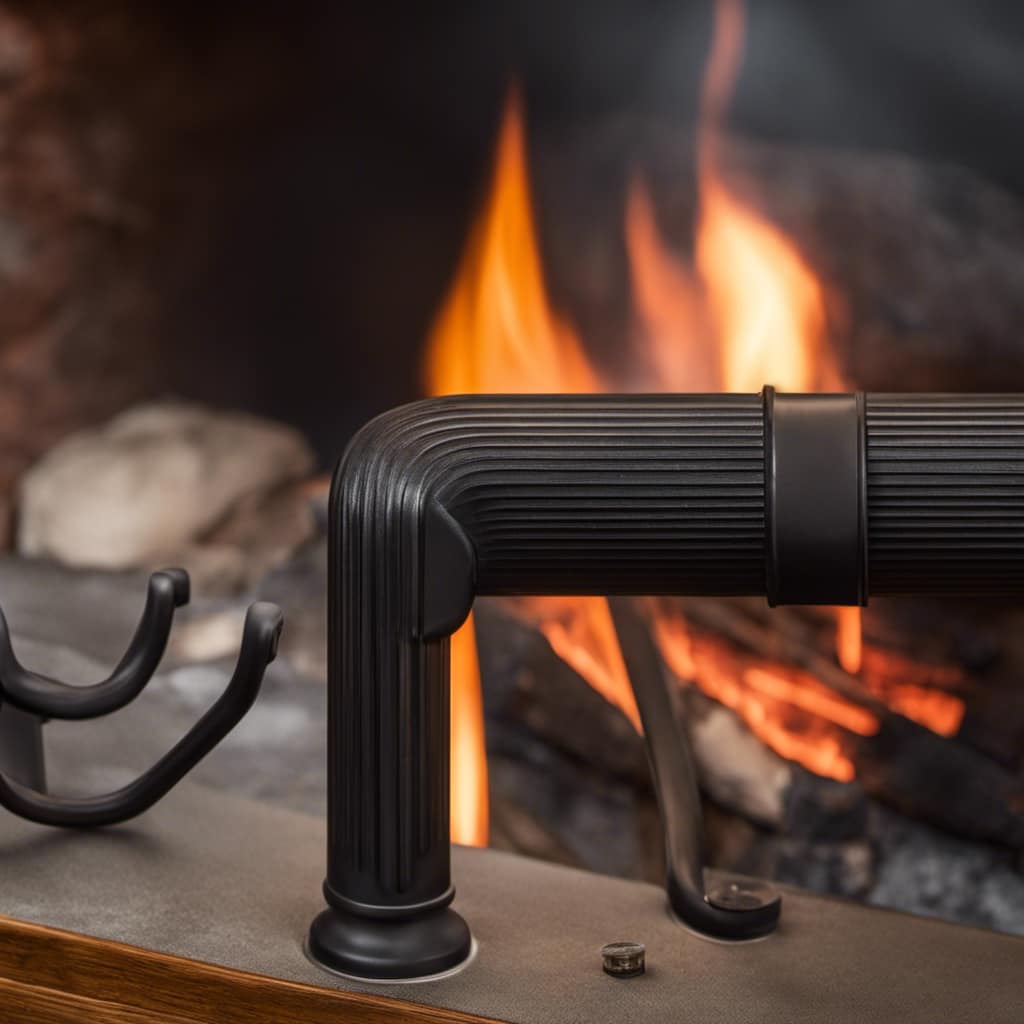
-
Sealant: Choosing the right sealant is crucial for achieving a complete seal on your wood stove door. Look for a high-temperature sealant specifically designed for this purpose.
-
Protective gloves: Working with sealant can be messy, so wearing gloves will protect your hands and make the process more comfortable.
-
Cleaning supplies: Before applying the sealant, it’s important to clean the door thoroughly. Gather some mild soap, water, and a soft cloth for this task.
-
Sandpaper: If the door has any rough or uneven surfaces, sanding them down will ensure a smoother application of the sealant.

-
Proper ventilation: Sealing a wood stove door can release fumes, so it’s essential to have proper ventilation in the area where you’ll be working. Open windows or use fans to ensure fresh air circulation.
Now that we’ve all the necessary materials, let’s move on to preparing the door: cleaning and prepping for the seal.
Preparing the Door: Cleaning and Prepping for the Seal
Now that all the necessary materials are gathered, it’s time to clean and prepare the door for the sealant.
Door preparation is crucial for ensuring the seal effectiveness and preventing any air leaks. To begin, I recommend starting with a thorough cleaning of the door surface. Use a mild detergent and warm water to remove any dirt, grease, or residue. Scrub gently with a soft cloth or sponge, paying attention to the corners and edges.
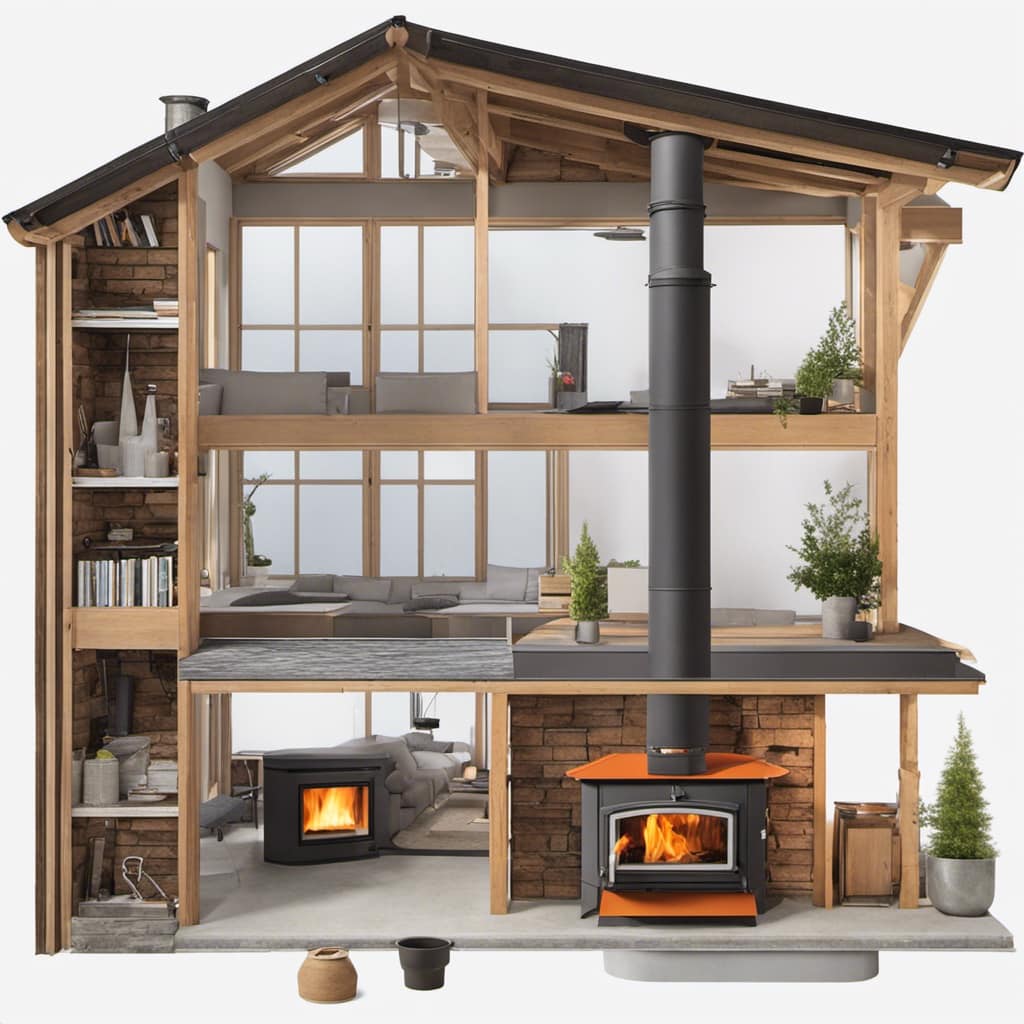
Next, inspect the door for any cracks or gaps. Fill these areas with a suitable wood filler and sand it down smooth. This step ensures a smooth and uniform surface for the sealant to adhere to.
Finally, wipe down the door with a clean, dry cloth to remove any dust or debris.
Applying the Seal: Step-by-Step Instructions
For this step, I’ll start by applying a thin layer of primer to the cleaned and prepped surface. This is an important step to ensure proper adhesion of the sealant.
Once the primer is dry, I carefully select the appropriate sealant for my wood stove door. Here are some key considerations when choosing a sealant:

- Compatibility with high temperatures: Make sure the sealant can withstand the heat generated by the wood stove.
- Flexibility: Look for a sealant that can accommodate the expansion and contraction of the door.
- Durability: Opt for a sealant that’s resistant to wear and tear, as well as moisture.
After selecting the sealant, I apply it evenly and smoothly onto the door using a brush or a caulking gun. I make sure to cover all the gaps and cracks thoroughly. This step is crucial to ensure a complete and effective seal.
To learn more about testing and maintaining the seal for long-lasting results, continue reading the next section.
Testing and Maintaining the Seal: Ensuring Long-lasting Results
I regularly check the seal on my wood stove door to make sure it remains intact and effective. Testing the seal is an important step in ensuring the efficient operation of a wood stove.
There are a few testing methods that can help determine if the seal is functioning properly. One method is the dollar bill test, where you place a dollar bill between the door and the stove and try to pull it out. If it slides out easily, it’s a sign that the seal needs attention.
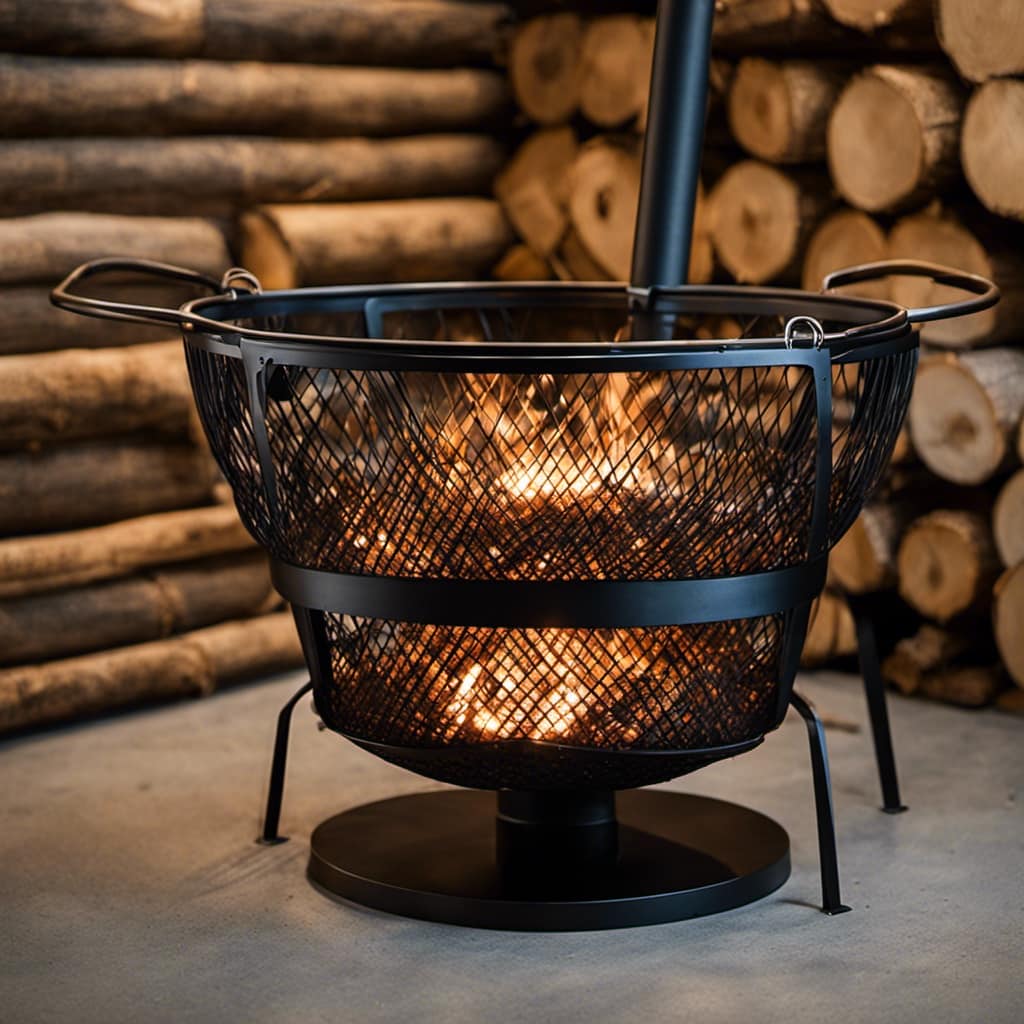
Another method is the smoke test, where you light a piece of incense and hold it near the door. If the smoke is drawn towards the door, there may be a leak.
Troubleshooting tips include checking for gaps or cracks in the seal, cleaning the seal regularly, and replacing it if necessary.
Frequently Asked Questions
How Often Should I Check and Maintain the Seal on My Wood Stove Door?
I check and maintain the seal on my wood stove door regularly to ensure its effectiveness. If not replaced regularly, the seal can deteriorate, leading to heat loss and potential safety hazards. Alternative methods for sealing include gasket ropes and adhesive tapes.
Can I Use Any Type of Sealant for My Wood Stove Door, or Are There Specific Recommendations?
When it comes to sealing your wood stove door, it’s important to choose the right sealant. There are specific recommendations to ensure a complete seal. Let’s explore the best practices for sealing your wood stove door.
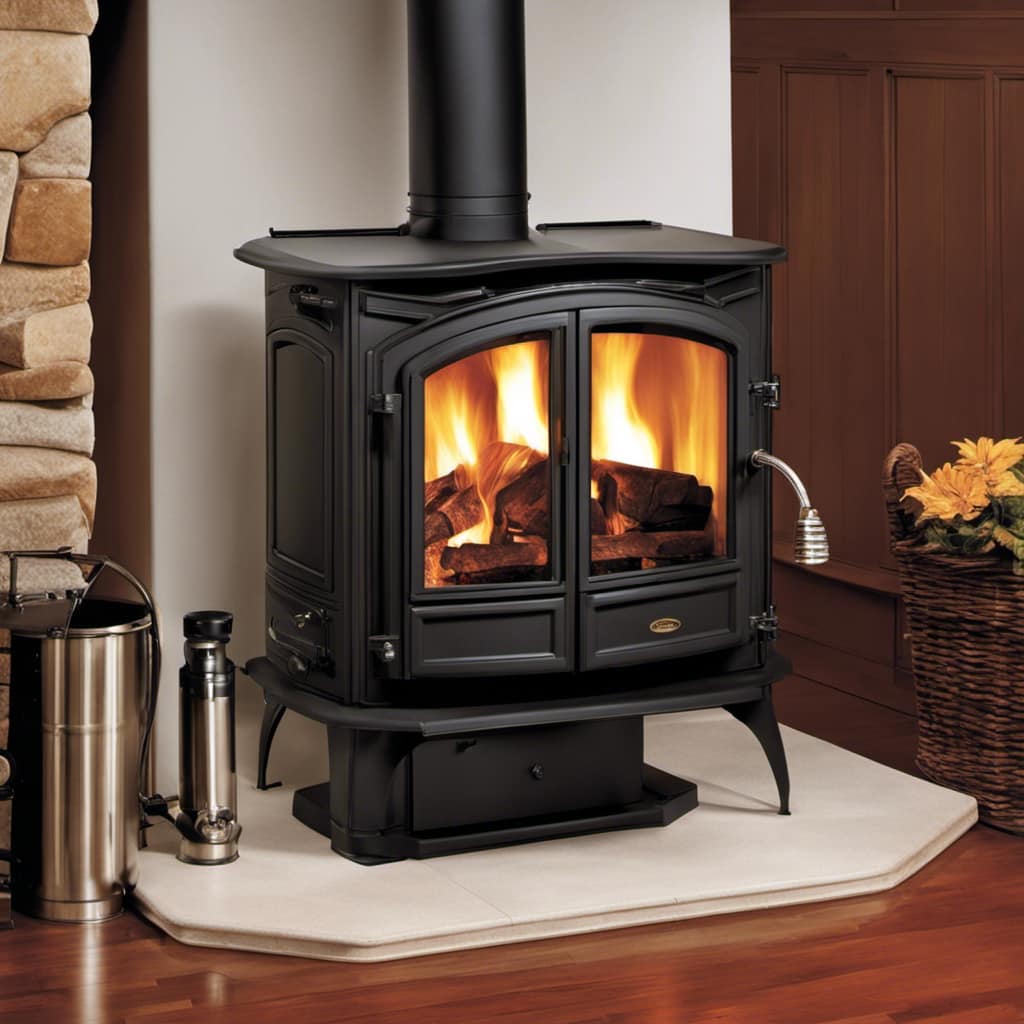
Is It Necessary to Remove the Door From the Stove in Order to Apply the Sealant?
It is not necessary to remove the wood stove door to apply the sealant. There are alternative methods for sealing the door without removing it. However, removing the door may allow for a more thorough and effective application of the sealant.
What Are Some Common Signs That Indicate the Seal on My Wood Stove Door Needs to Be Replaced?
When the seal on my wood stove door starts to show signs of wear, like cracks or gaps, it’s crucial to replace it promptly. Ignoring these signs can lead to energy loss and potential safety hazards.
Are There Any Safety Precautions I Should Take When Applying the Sealant to My Wood Stove Door?
When applying sealant to a wood stove door, it’s important to take precautions and prioritize application safety. By following proper procedures and wearing protective gear, you can ensure a secure and effective seal.
Conclusion
After following the step-by-step instructions and applying the seal to your wood stove door, it’s crucial to test and maintain the seal regularly to ensure long-lasting results. By doing so, you can keep your wood stove operating efficiently and prevent any potential leaks or drafts.
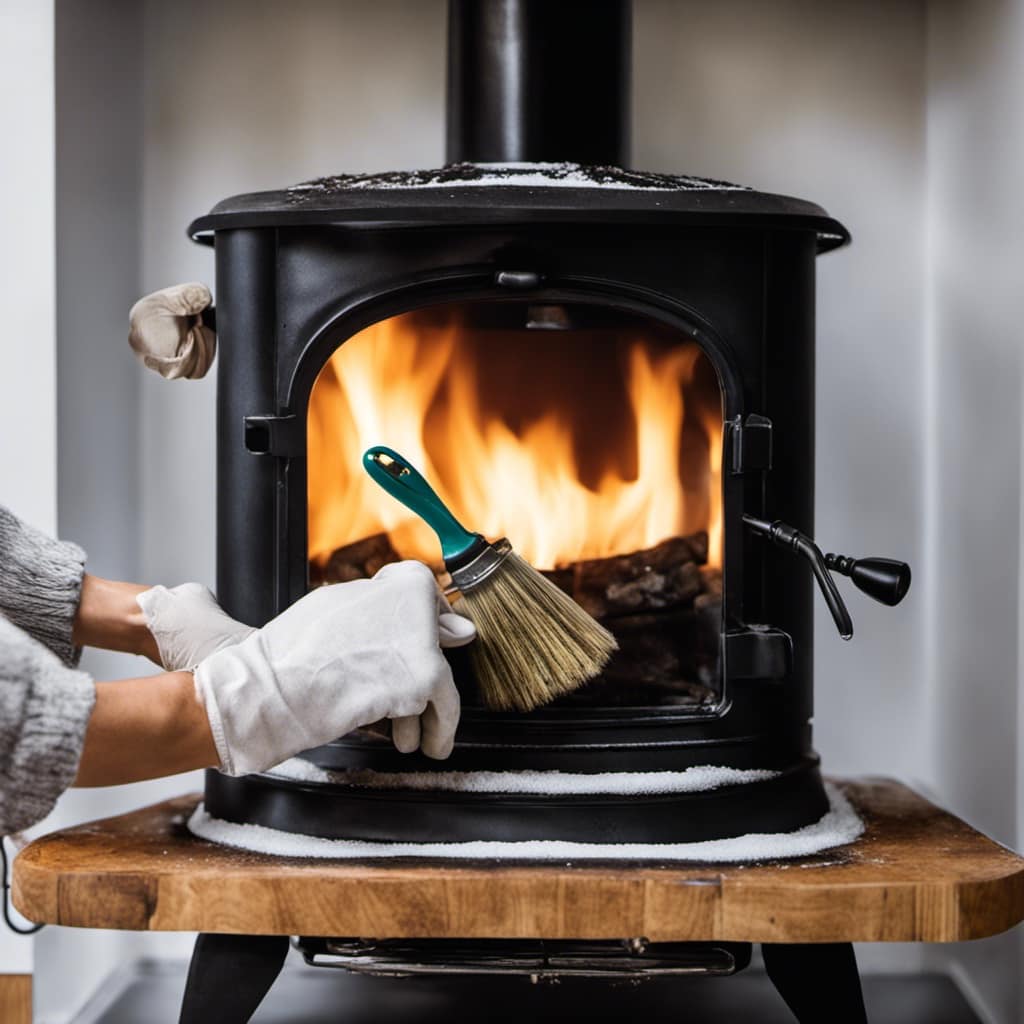
Remember, a properly sealed wood stove door is essential for maximizing heat output and minimizing energy wastage. So, take the time to assess, gather materials, prepare, and apply the seal meticulously for optimal performance.
Growing up surrounded by the vast beauty of nature, Sierra was always drawn to the call of the wild. While others sought the comfort of the familiar, she ventured out, embracing the unpredictable and finding stories in the heartbeat of nature.
At the epicenter of every remarkable venture lies a dynamic team—a fusion of diverse talents, visions, and passions. The essence of Best Small Wood Stoves is crafted and refined by such a trio: Sierra, Logan, and Terra. Their collective expertise has transformed the platform into a leading authority on small wood stoves, radiating warmth and knowledge in equal measure.











